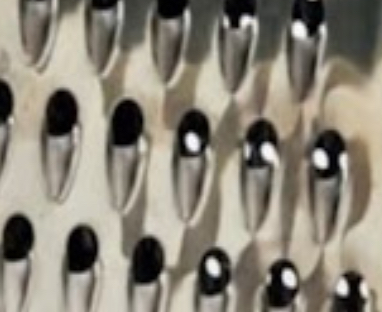Understanding the Cheese Grater’s Sides
BEFORE DIVING INTO THE FOURTH SIDE, LET’S BREAK DOWN THE BASICS:
• Side 1 : Large holes (shredding side): Ideal for grating cheese, zucchini, or potatoes for hash browns.
• Side 2: Medium holes (coarse grating): Perfect for semi-hard cheeses, carrots, or creating thicker shreds.
• Side 3: Small holes (fine grating): Used for Parmesan, citrus zest, garlic, or nutmeg.
• Side 4: The Mystery Side (slicer or ridged perforations): Often misunderstood, this side features small, sharp, slightly raised perforations. It’s not just for show — it’s designed to create fine powder-like textures or transform solid foods into delicate crumbles.
REWRITE UNIQUE ARTICLE AND GIVE GOOD TITRE WITH IT
Step-by-Step Guide to Mastering the Fourth Side
READY TO PUT THE FOURTH SIDE TO WORK? FOLLOW THESE STEPS TO UNLOCK ITS POTENTIAL:
Step 1: Choose Your Ingredient
The fourth side works best with firm foods. Here are some great options:
• Hard cheeses (Parmesan, Pecorino)
• Chocolate bars
• Stale bread for homemade breadcrumbs
• Nutmeg, cinnamon sticks, or other hard spices
Step 2: Prep Your Workspace
• Place the grater over a clean cutting board or plate.
• Hold the grater firmly with one hand, ensuring stability. If your grater tends to slip, place a damp cloth underneath.
Step 3: Grip and Grate
• Take your chosen ingredient and hold it securely.
• Apply light pressure while moving the ingredient down the fourth side in a smooth, consistent motion. Avoid pushing too hard — the goal is to let the perforations do the work.
• For ingredients like chocolate or cheese, rotate the block occasionally to ensure even grating.
Step 4: Collect the Results
• As you grate, fine crumbs or powder will collect on the surface below.
• Scrape the inside of the grater to gather any residue — these fine particles are culinary gold!
Step 5: Put It to Use
Now comes the fun part: sprinkling your masterpiece! The powdery texture from the fourth side is perfect for:
• Dusting desserts with chocolate or cinnamon.
• Garnishing pasta or soups with ultra-fine Parmesan.
• Creating homemade breadcrumbs or spice blends.
Step 6: Clean with Care
The fourth side’s tiny holes can trap residue, so be sure to clean it thoroughly:
• Rinse immediately under warm water to prevent food from drying.
• Use a soft brush or toothbrush to remove stubborn particles.
• Dry completely before storing to prevent rust.
Conclusion: The Secret No More
The fourth side of the cheese grater may have been a mystery, but no longer. Whether you’re enhancing a cheesecake with a delicate chocolate dusting or adding a whisper of nutmeg to your latte, this underappreciated tool brings a touch of finesse to everyday dishes. So next time you open that kitchen drawer, remember — your trusty cheese grater holds more secrets than meets the eye.







